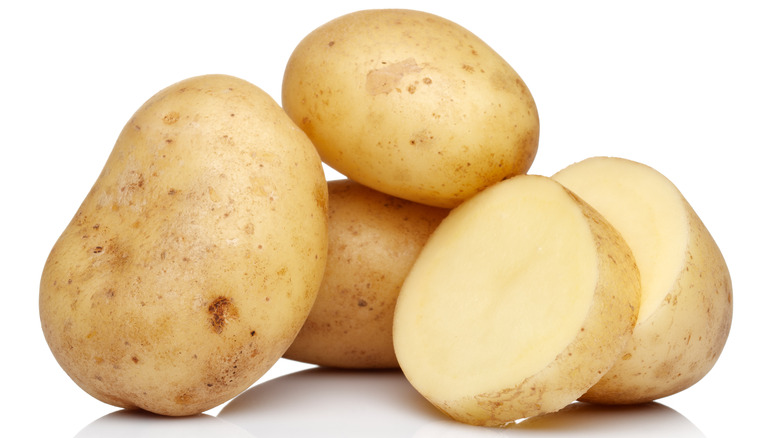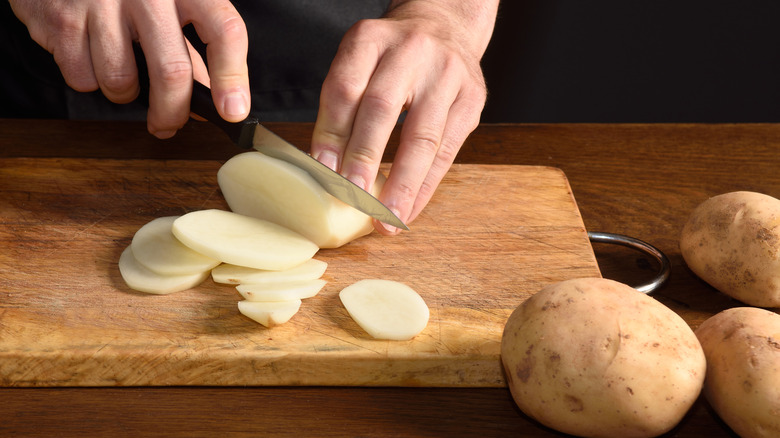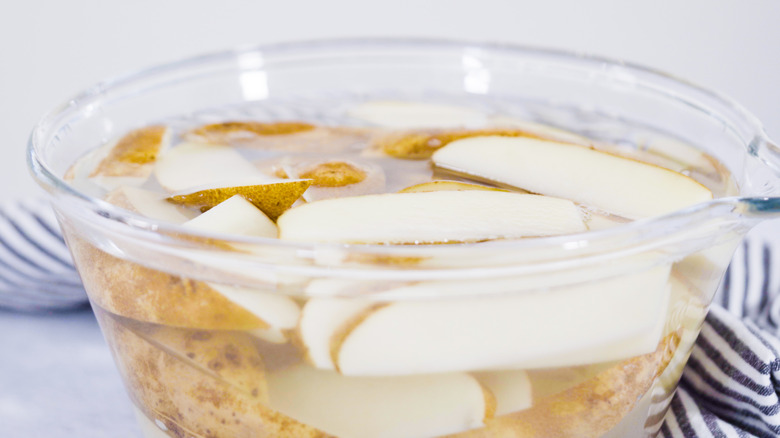Why Potatoes Sometimes Turn Pink When You Cut Them
The humble potato gets a lot of play in kitchens around the world, from starring in comforting side dishes to supplementing soups and stews. Versatile, cheap, and full of nutrition, potato dishes grace the table at every meal. But proper prep work is important for this starchy vegetable. Home cooks know to wash spuds before cooking them, to cut out the eyes and growths when applicable, and that green potatoes should be avoided. But what about pink potatoes?
You may have caught a glimpse of something rosy while peeling or chopping potatoes for a meal, especially if you didn't cook them immediately after cutting. A subtle, pinkish color can sometimes tint the inner flesh of the vegetable. Pink potatoes certainly look odd, but a pink hue on your potatoes isn't cause for alarm — it's just a scientific reaction called oxidization that happens when they're cut.
Unlike green potatoes, which can contain the toxin solanine and cause headaches, vomiting, and other negative symptoms, pink potatoes are harmless and won't upset your stomach.
What's the reason for the drastic color change?
When a potato is sliced or peeled, the vegetable's internal enzymes meet with oxygen and a chemical reaction called oxidization occurs. This is the same process that turns apples, avocados, and other fruits brown after cutting. (It can also make the potatoes a bit gummy with excess starch.)
Some potatoes will turn gray, rather than pink, when they're sliced, but the outcome is the same. Those potatoes may look unappealing, but they're still perfectly safe to cook and eat.
Grating or shredding potatoes for dishes like latkes often speeds up and enhances oxidation, as the process exposes more of the potato flesh to oxygen. Your cookware also plays a role — iron knives and iron skillets can make the discoloration even stronger. This shift is an inevitability unless you cook your potatoes immediately or take steps to prevent the oxidation from occurring.
Prevent pinkening with these tips
While discolored potatoes may be harmless, most cooks prefer to avoid oxidization for aesthetic purposes. (A bowl of pink or gray mashed potatoes simply doesn't look as appetizing as the white fluff most people expect.) Oxidation may be inevitable, but there are plenty of ways to slow the process long enough to get your potatoes in the pan.
Using sharp, non-iron cutlery (such as aluminum) while chopping helps; the less damaged the potato's interior, the less likely it will discolor. If you won't be using your spuds immediately, put them in a bowl of cold water to prevent the oxygen from getting in and to keep temperatures down, both of which slow discoloration. Acidity can also help, much like the trick of spritzing lemon juice on guacamole or sliced apples. A splash of concentrated lemon juice or vinegar in the soaking water goes a long way.
Still, the best way to avoid pink potatoes is to cook them quickly after cutting. Be sure to have your pan or pot ready once you start slicing.


